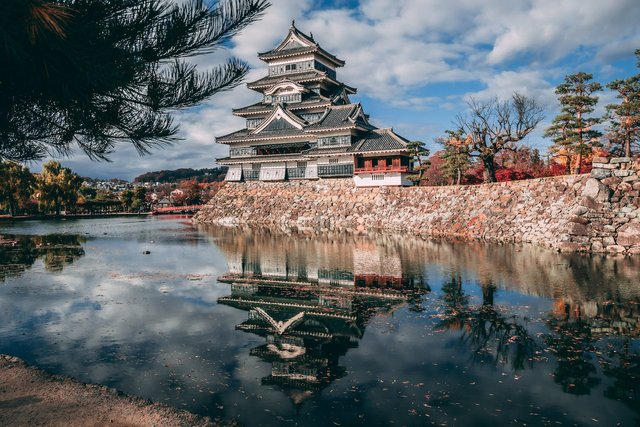
Photo Source: https://www.pexels.com/id-id/foto/kuil-pagoda-dekat-danau-di-bawah-langit-berawan-1829980/
Behold the spectacle that is the Hanging Temple, or Xuankong Temple, an architectural wonder perched daringly close to the heavens near Mount Heng in Hunyuan County, Datong City, Shanxi Province, China. This structure, defying the gravitational norms, asserts itself as a living testament to the brilliance of ancient architectural minds, all set against the backdrop of a staggering 75-meter elevation above the earthly realm.
Delving into the extraordinary allure of this marvel, one cannot overlook its anomalous positioning on a sheer cliff, defying the conventions of ground-bound temples. Instead, it seamlessly weaves into the rugged cliff face, presenting a mesmerizing visual extravaganza that has kept spectators entranced for untold centuries.
Tracing its roots back a staggering 1,500 years to the twilight of the Northern Wei Dynasty (386–584 AD), the Hanging Temple emerges as a venerable relic, standing tall as one of the oldest surviving wooden structures in China. The layers of time cloak it with historical significance, elevating its architectural prowess to a level where past and present coalesce.
What sets this architectural marvel apart is its uncanny ability to meld diverse religious influences, creating a spiritual tableau where Buddhism, Taoism, and Confucianism converge harmoniously. Step into its sacred precincts, and be greeted by statues venerating Confucius, Laozi, and Buddha—a triadic embodiment of the spiritual mosaic woven intricately into the temple's very fabric.
Surprisingly, despite its seemingly precarious perch, the Hanging Temple predominantly boasts a composition of wood. Crossbeams intricately inserted into cliffside crevices form the backbone of this fragile marvel. Across epochs, meticulous replacements and reinforcements have weathered the tempest of time, ensuring the temple's resilience against the harsh elements.
Witnessing the Hanging Temple is akin to embarking on a cultural odyssey, a journey through a living testament to the fusion of architectural styles. Chinese, Indian, and even Greek influences dance in harmony within its design, giving rise to three distinct halls consecrated to diverse deities. The temple, thus, stands not just as a physical entity but as a convergence point for a kaleidoscope of cultural elements.
Dive into the ingenious suspension technique employed by the architects, crafting an illusion that defies gravity itself. Clinging to the cliffside, the temple appears to hang suspended in midair, a theatrical architectural illusion that amplifies its mystique and allure.
Beyond the veneer of architectural marvel, the Hanging Temple unfolds as a narrative of profound cultural and historical significance. It beckons Buddhists on spiritual pilgrimages, offering solace amidst its sacred precincts. Simultaneously, it extends an open invitation to global wanderers, attracting awe-inspired tourists to bask in the glory of this ancient wonder.
Time, an unforgiving force, has necessitated multiple renovations and restoration endeavors for the Hanging Temple. Wooden structures reinforced, weather-induced damages meticulously repaired—these efforts stand testament to an unwavering commitment to preserving the temple's integrity. They mirror the enduring cultural value placed on this architectural relic, ensuring its continued resonance across the epochs.
As the shadows of Mount Heng cast their embrace, the Hanging Temple extends an irresistible call to those eager to decipher its enigmatic secrets. A symphony of faiths, cultures, and architectural styles, this ancient marvel rises tall, both literally and metaphorically, an enduring tribute to the indomitable spirit of human ingenuity that transcends the sands of time.